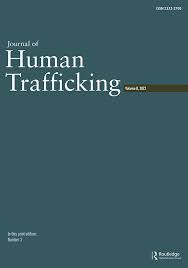
Human Trafficking Education: Inpatient/Outpatient Healthcare Settings
Background: While it is common for trafficked persons (TPs) to access healthcare, few health professionals have had training and lack confidence in their ability to respond effectively. Additionally, healthcare does not have evidenced-based education or policy for responding to TP. This study evaluated knowledge and confidence in responding to TPs among multidisciplinary participants from outpatient and inpatient settings. Methods: A revised version of the Provider, Responses, Treatment, and Care for Trafficked People (PROTECT) instrument was used. An additional question was added to record previous contact with trafficked persons. The first phase of data collection (n = 237) occurred pre and post education. The second phase of data collection (n = 106) was completed three months after implementation of a response policy and procedure. Results: Phase one results are statistically significant with a sharp increase in the number of participants who reported caring for a TP. Knowledge and confidence levels were also significantly impacted. The second phase did not show a significant change in confidence. However, six knowledge questions related to identifying potential cases of HT were significantly different, showing a decrease in knowledge over time. Discussion: This study documents the benefits of education based on Health, Education, Advocacy, Linkage (HEAL) Trafficking’s recommendations. Follow-up survey shows that without ongoing education or awareness activity, key knowledge areas decline. Therefore, while policy and awareness education are important, health professionals need ongoing education as well as incentive to utilize the response policy and procedure.
Read the full article here.
